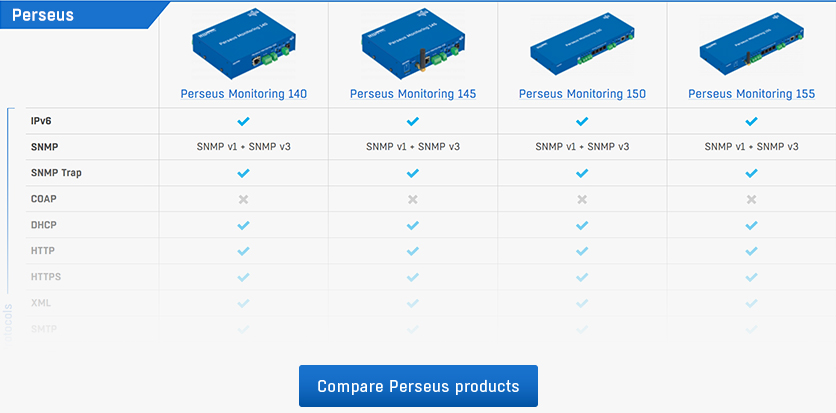
![]()
Perseus Monitoring 140 and 145 both feature:
- Meters API - ability to analyze sensor data from HWg devices as well as 3rd party products on the same network;
- Scheduler - local calendar based flexible scheduling;
- Calculation formulas - ability to convert variables from one unit to another;
- Templates - a repository for 3rd party compatible sensors;
- Conditions and actions - each variable can have multiple conditions and actions;
- Radius - centralized 802.1X security management;
- LUA - local custom scripts that run on the device;
- WLD - water leak detection zone input;
- RS-485 - read and write support for Modbus/RTU meters;
- Up to 100 external meters (sensors) with 1000 values (variables).

Perseus Monitoring 140 is a LAN remote monitoring solution, offering:
- 4xRJ11 ports for 1W-UNI sensors;
- 1xRS-485 Modbus/RTU terminal block;
- 1xWLD input;
- 4x DI (dry contact);
- 2x DO (relays).
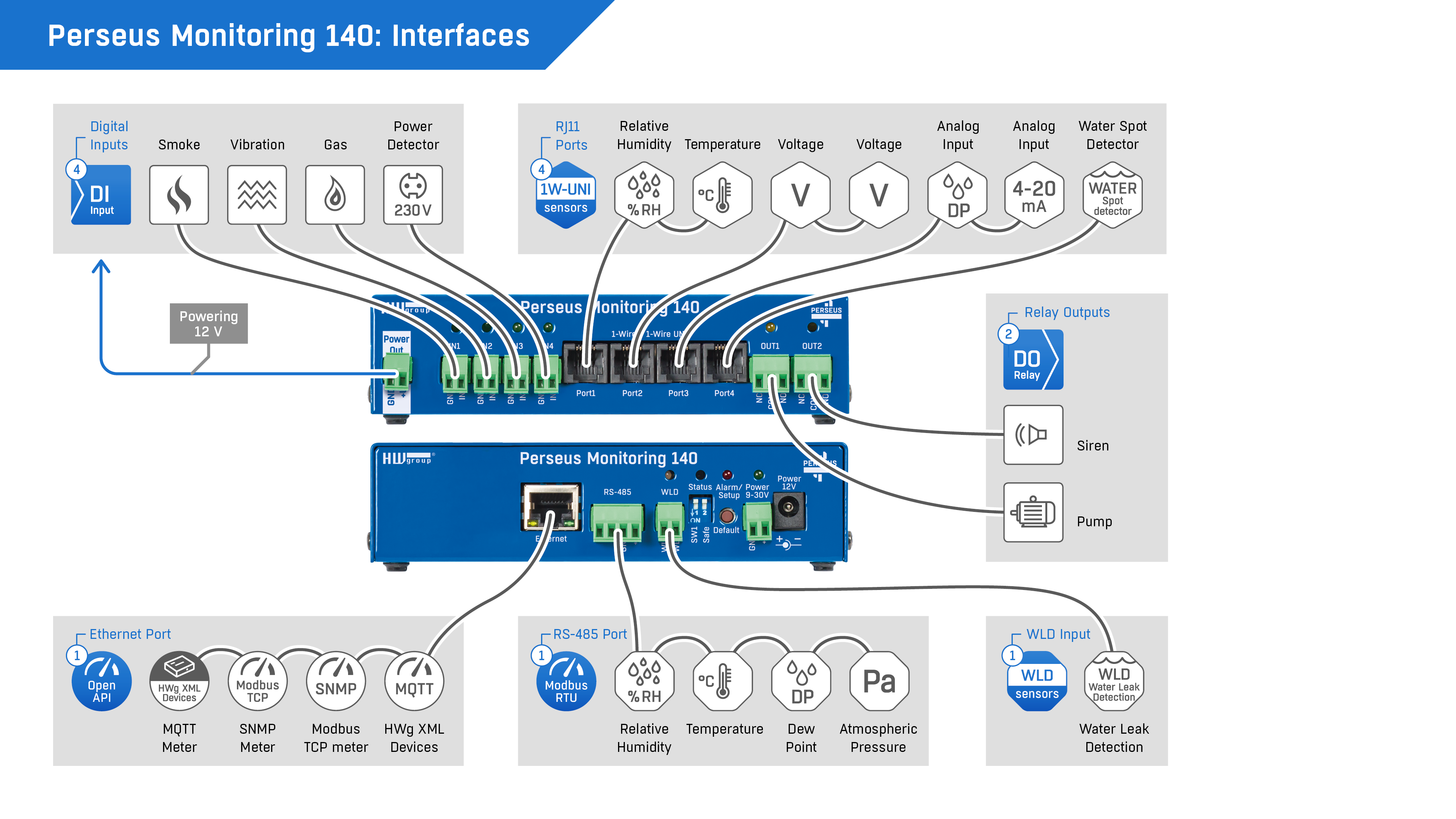

Perseus 140 & 145 combine data from external physical sensors / detectors with data from other HWg devices connected via LAN. Local conditions, Lua scripting, calendar or periodic scheduler help to analyze the measured data.
Email or SNMP trap alerts can be sent from the Perseus device. The measured values are available via Open API (XML, Modbus/TCP, MQTT).
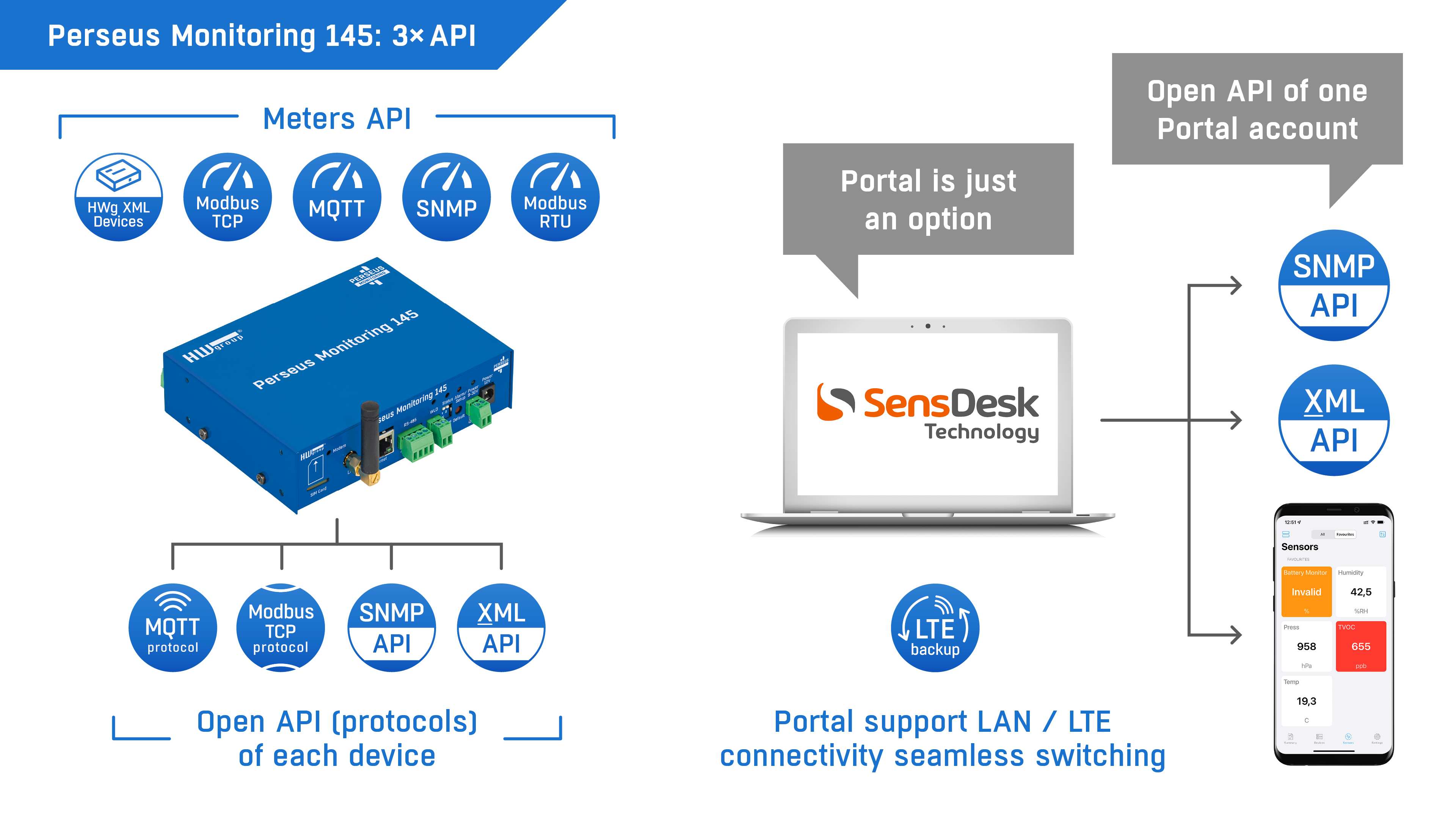

Perseus Monitoring 140 & 145 can be connected to the Portal (SensDesk technology). Together with the Portal it's a powerful solution for professional applications with graphs, SNMP and Device Invalid Alert.
Meters API is a unique feature of Perseus products - reading values from external LAN devices. This means that Perseus can connect via LAN to other devices on the same network and analyze their sensor data.
For example, Perseus can read the temperature at the site from its own 1W-UNI temperature sensor, compare this temperature with the temperature sensor connected to the external STE2 R2 thermometer and the temperature probe in the UPS (available via SNMP - Meter API). Alert can be triggered when at least 2 temperatures exceed critical temperature.
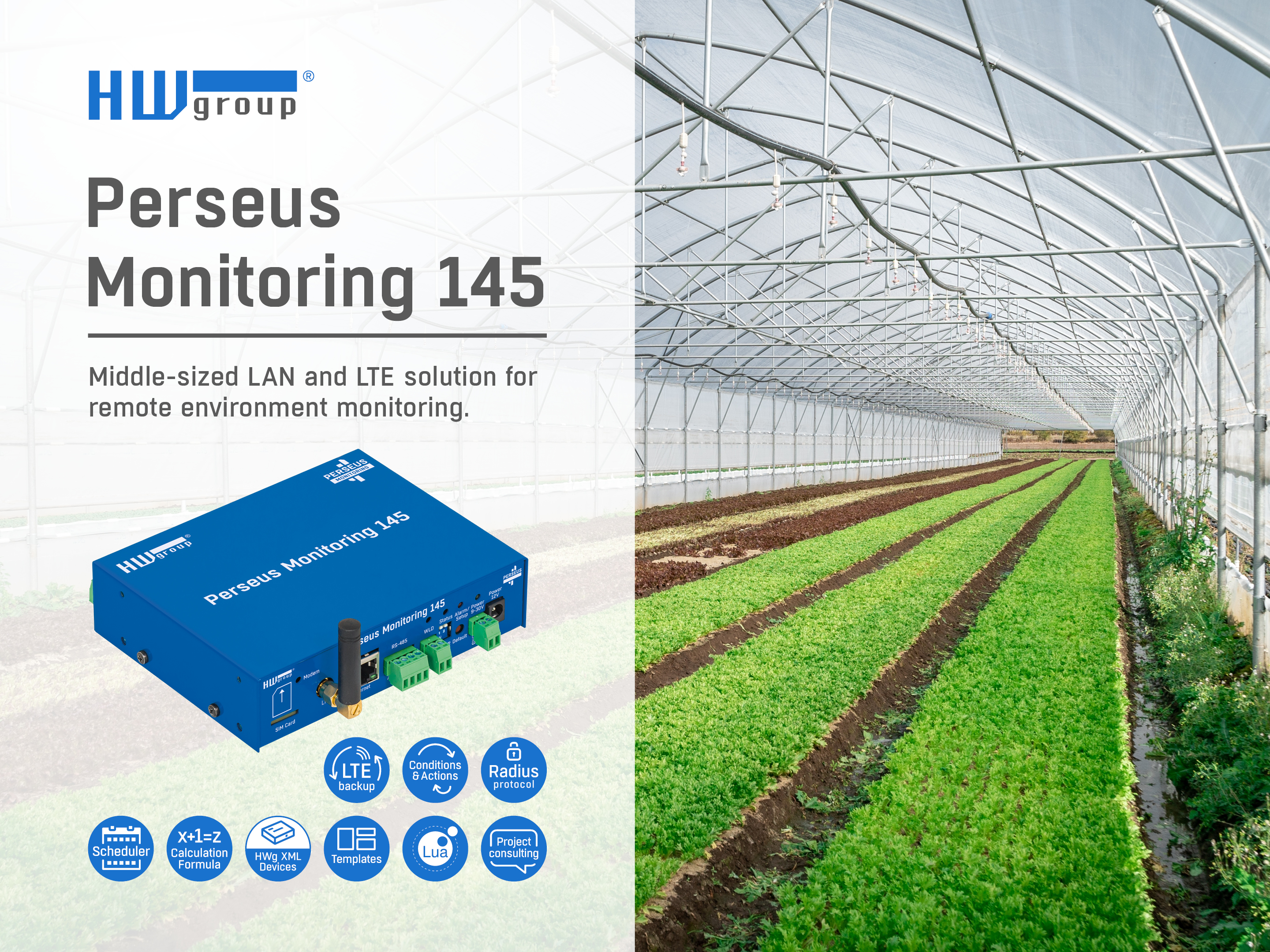

Perseus Monitoring 145 is a LAN & LTE-enabled remote monitoring solution, offering:
- 4xRJ11 ports for 1W-UNI sensors;
- 1xRS-485 Modbus/RTU terminal block;
- 1xWLD input;
- 4x DI (dry contact);
- 2x DO (relays);
- Global LTE.

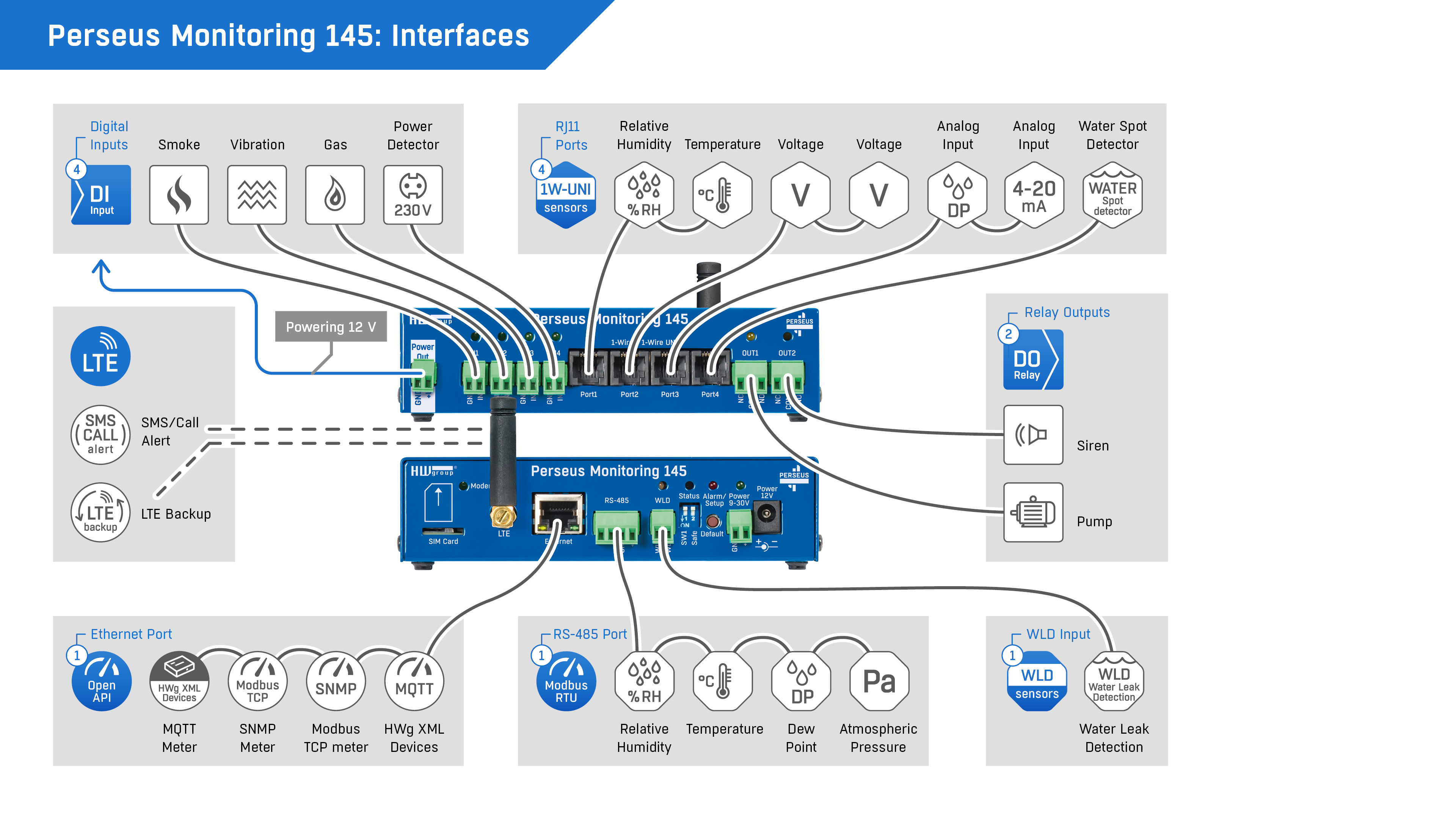
The key difference between two new models is the Global LTE modem, allowing the device to stay operational in case of an Ethernet outage.
Internal LTE modem allows for backup connectivity to the Portal, as well as SMS and Call alerts. Alerting from the Portal is recommended, it’s reliable for LAN even with the LTE device connectivity, the user can be alerted if the device is disconnected (Device Invalid Alert).
The Perseus 145 internal LTE modem can also be configured as an SMS gateway for other HW group devices.
Two new Perseus units represent the same software and hardware monitoring platform, albeit in a smaller package compared to the previously announced 150 and 155 models.
For now, we are focusing our efforts on the soon-to-arrive Perseus Energy units. Stay tuned for more news!

